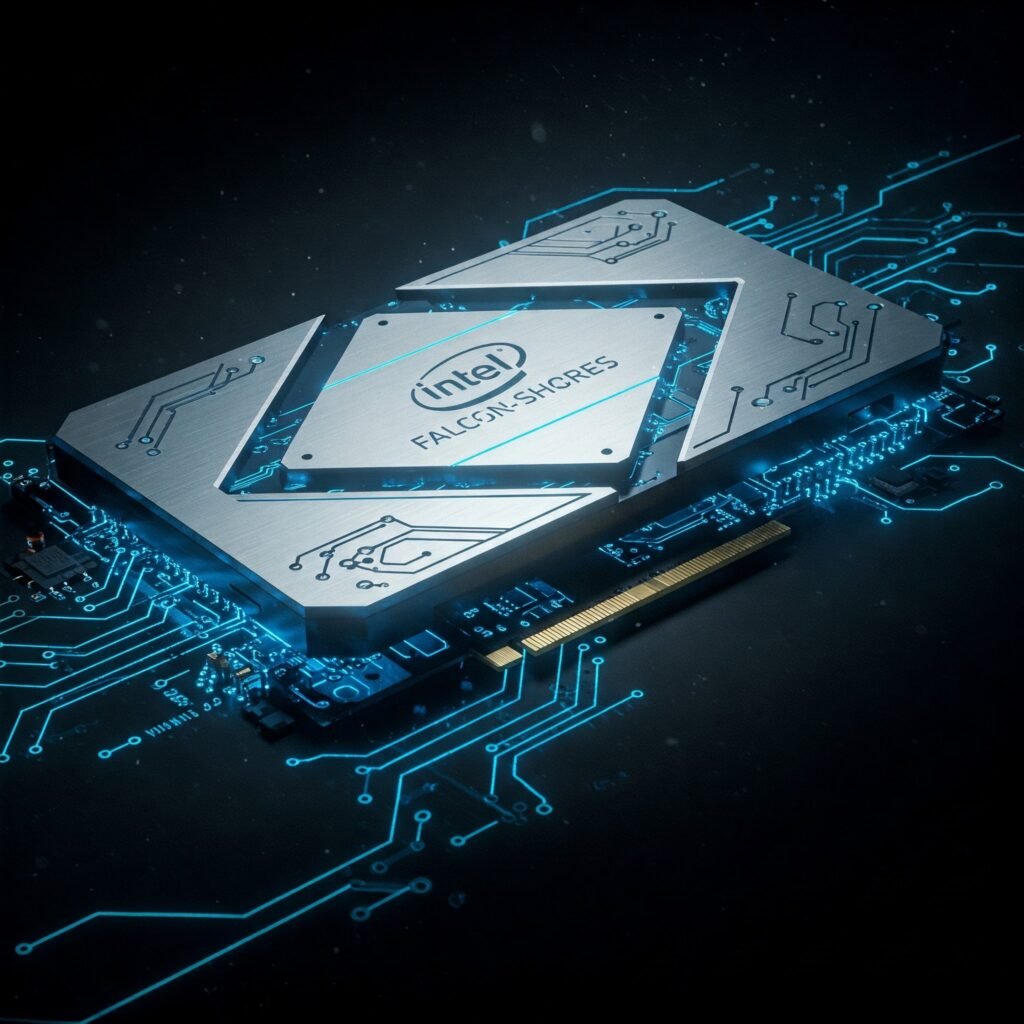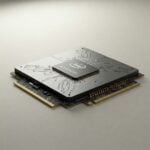UPDATE: 3/23/2025 – Intel’s AI Shake-Up: Falcon Shores CANCELLED; Jaguar Shores Takes Center Stage
The AI Arms Race just got spicy, so let’s cut to the chase: the AI world is a battlefield, and NVIDIA has been holding the high ground. I was guessing that Intel would take the back seat AGAIN!? But they’re finally adding to the “mix” years later with Falcon Shores “GPU”, a revolutionary XPU (Intel’s term – Cross Processing Unit or eXtended Processing Unit) that’s got everyone talking.
Forget just another GPU; this is a CPU and GPU having a love child, and it’s designed to obliterate AI workloads.
Under new leadership of Intel’s CEO, Pat Gelsinger, the company is aggressively expanding its presence in the discrete GPU market, while NVIDIA’s Jensen Huang continues to steer his company’s dominance in the field. As these two giants vie for supremacy, the landscape of high-performance computing is poised for a seismic shift, with far-reaching implications for industries ranging from scientific research and healthcare to finance and gaming.
We’re not just talking incremental improvements here. Intel’s Falcon Shores is a paradigm shift. It’s a unified XPU, a tile-based, HBM-powered beast that’s gunning for NVIDIA’s crown. But is it just hype? Let’s find out why does this matter. Primarily, AI and HPC workloads are ravenous for data. Moving data between CPUs and GPUs is a bottleneck. Falcon Shores aims to eliminate that bottleneck, allowing for lightning-fast data transfer and processing.
Tile-Based Architecture: Scalability on Steroids
One of the most intriguing aspects of Falcon Shores is its tile-based architecture. Think of it as LEGO bricks for GPUs. You can stack these tiles together to create GPUs of varying sizes and configurations, tailoring them to specific workloads.
This modularity is a game-changer. It allows Intel to offer a range of Falcon Shores configurations, from smaller, power-efficient chips for edge computing to massive, high-performance beasts for data centers. It also makes manufacturing more efficient, potentially reducing costs.
HBM: Bandwidth for the AI Age
AI workloads are memory-intensive, they need to move massive amounts of data in and out of memory at lightning speed. That’s where High-Bandwidth Memory (HBM) comes in. Falcon Shores is expected to leverage HBM to provide the insane memory bandwidth required for AI training and inference. Why is this a big deal? Because memory bandwidth is a critical factor in AI performance. Without it, even the most powerful GPU will be bottlenecked.
A Hybrid Approach: x86 Meets Xe-HPC
Falcon Shores isn’t just a GPU; it’s a hybrid XPU, combining x86 CPU cores with Xe-HPC GPU cores. This unique approach allows for a synergistic blend of CPU and GPU capabilities. Built to handle both general-purpose computing and specialized AI tasks with incredible efficiency.
The NVIDIA Challenge: A100 and H100 in the Crosshairs
NVIDIA has been the undisputed leader in the AI GPU market, with its A100 and H100 GPUs setting the bar for performance. But Intel is aiming to change that.
NVIDIA A100: A powerhouse for AI and HPC, dominating data centers with its matrix operations and high memory bandwidth.
NVIDIA H100: The successor, pushing the boundaries of AI performance, especially for transformer-based models, with enhanced memory bandwidth and architectural innovations.
Falcon Shores is designed to go head-to-head with these titans, offering a unique XPU architecture that Intel believes will give it a competitive edge.
The Delay: A Strategic Pause!!??
Originally slated for a 2024 release, Falcon Shores has been pushed back to late 2025. Intel cites restructuring efforts and a focus on its x86 architecture as the reasons for the delay.
Is this a setback? Maybe. But it could also be a strategic pause, allowing Intel to refine its design and software ecosystem. The AI market is evolving rapidly, and a delay could allow Intel to deliver a more mature and competitive product.
The Software Ecosystem: OneAPI’s Role
Hardware is only as good as its software. Intel hopefully understands this, and so they’re betting big on OneAPI, their unified software stack. OneAPI aims to provide a seamless software development experience across Intel’s diverse hardware architectures, including Falcon Shores. This is crucial for AI developers. They need tools and libraries that are easy to use and performant. OneAPI aims to provide that, making Falcon Shores more attractive to developers.
The Future of AI: A New Era of Competition
The AI market is booming, and the demand for powerful hardware is only going to increase. Intel’s Falcon Shores is poised to play a significant role in this market. The competition between Intel and NVIDIA is going to be fierce, and that’s good for everyone. It will drive innovation and lead to better products for consumers and enterprises alike.
Conclusion
Intel’s bold gamble w/ Falcon Shores is a gamble that could pay off big. If Intel can deliver on its promises, Falcon Shores could be a game-changer. It could disrupt the AI market and challenge NVIDIA’s dominance. The next few years are going to be exciting. The AI arms race is just heating up, and Intel’s Falcon Shores is ready to rumble.
What are your thoughts on Intel’s Falcon Shores? Do you think it can challenge NVIDIA’s dominance? Let us know in the comments below! Don’t forget to share this post with your friends and colleagues.
#Intel #FalconShores #AI #GPU #NVIDIA #TechNews #HPC #XPU #OneAPI #DeepLearning #ArtificialIntelligence #TechInnovation #FutureTech



